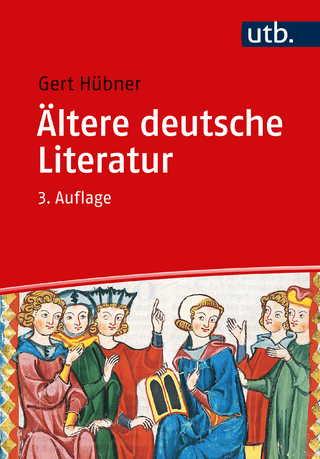
Diachronic Dialectology
Wiley-Blackwell (Verlag)
978-1-119-85897-3 (ISBN)
Discusses the use of kernel smoothing in historical dialectology and new approaches to parameter setting
Presents a series of case studies from the history of Norwegian language
Investigates some of the major phonological and morphosyntactic shifts which transformed the language from Old Norwegian through Middle to early Modern Norwegian
Demonstrates how the kernel smoothing method allows us to see how these changes spread from place to place, and these findings are used to throw light on a number of more general research questions of interest to an audience beyond Scandinavianists
A step-by-step guide to kernel smoothing is offered, so that non-experts can apply the approach to their own data
After a BA in Linguistics at the University of Essex, Tamsin Blaxter did her MPhil in General Linguistics and Comparative Philology at the University of Oxford, with a dissertation that explored gendered language in the medieval Íslendingasögur. For her PhD at the University of Cambridge, she worked on language change and space in medieval Norway. Her work focuses on new methods of gathering and exploring large datasets in variationist linguistics, with a particular interest in space.
List of figures
List of tables
Abbreviations and symbols
Acknowledgements
1. Introduction
1.1. Foreword
1.2. Structure
2. The statistics of space in historical linguistics
2.1. Introduction
2.1.1. Visualising time and space: problems and solutions
2.2. Kernel smoothing
2.2.1. Kernel smoothing for spatial variation
2.2.2. Time
2.3. Parameter setting
2.3.1. Setting bandwidths based on real-world priors
2.3.2. Setting bandwidths based on predictive accuracy
2.3.3. Setting bandwidths based on power analysis
2.3.4. Conclusions
3. Language in medieval Norway and sources of data
3.1. Introduction
3.2. Norway and Norwegian in the late medieval period
3.2.1. Sociolinguistic statuses of the languages
3.2.2. Contact
3.2.3. A note on Jamtland
3.3. The Diplomatarium Norvegicum and the DN online
3.3.1. The Diplomatarium Norvegicum
3.3.2. Annotation
4. Variable definitions and datasets
4.1. Introduction
4.2. Phonological variables
4.2.1. Rise of svarabhakti vowels
4.2.2. Loss of voiceless dental fricatives
4.2.3. Loss of voiced dental fricatives
4.3. Morphological variables
4.3.1. Changes in agreement of verbs with 1sg. subjects
4.3.2. Changes in the form of 1pl and 1du. subject pronouns
4.3.3. Changes in agreement of verbs with 1pl and 1du. subjects
4.4. Syntactic variables
4.4.1. Loss of lexical genitives
5. Individual changes
5.1. Introduction
5.2. The loss of the dental fricatives
5.2.1. Timing
5.2.2. Spatial distribution
5.3. The loss of 1pl active -um
5.3.1. Timing
5.3.2. Spatial distribution
5.4. The Constant Rate Effect
5.5. Conclusions
6. The Trudgill conjecture
6.1. Introduction
6.2. Theoretical background
6.2.1. Trudgill, Dahl and McWhorter
6.2.2. Other proposals regarding relationships between complexity and social factors
6.2.3. The case of Nordic
6.3. Predictions
6.4. Variables
6.5. Spatial distributions
6.5.1. Loss of 1sg agreement in the present active
6.5.2. Loss of the voiced dental fricative
6.5.3. The rise of svarabhakti vowels
6.5.4. Loss of the voiceless dental fricative
6.5.5. Merger of 1du. pronoun into 1pl pronoun
6.5.6. Merger of 1pl pronoun into 1du. pronoun
6.5.7. Replacement of the 1pl pronoun by borrowed vi
6.5.8. Replacement of the 1du. pronoun by borrowed vi
6.5.9. Loss of 1pl middle agreement
6.5.10. Loss of genitive objects of millum
6.5.11. Loss of 1pl agreement in verb-subject order
6.5.12. Loss of 1pl agreement in subject-verb order
6.5.13. Loss of number agreement on present tense verbs
6.6. Conclusions
7. Spatial models of diffusion
7.1. Background
7.2. Methods
7.2.1. Approach
7.2.2. Hierarchicality measure
7.3. Variables
7.3.1. Replacement of 1pl v´er by reanalysed m´er
7.3.2. Replacement of 1du. vit by reanalysed mit
7.4. Results
7.5. Discussion
8. Conclusions
9. Annex: A step-by-step guide to kernel smoothing for historical dialectology
9.1. Introduction
9.2. Software and dependencies
9.3. Preparing your data
9.4. Preliminary exploration
9.5. Determining bandwidths
9.6. Temporal kernel smoothing
9.7. Spatial-temporal kernel smoothing
9.8. Spatial visualisation
10. Appendix
| Erscheinungsdatum | 04.02.2022 |
|---|---|
| Reihe/Serie | Publications of the Philological Society |
| Verlagsort | Hoboken |
| Sprache | englisch |
| Maße | 154 x 230 mm |
| Gewicht | 454 g |
| Themenwelt | Geschichte ► Allgemeine Geschichte ► Mittelalter |
| Geisteswissenschaften ► Geschichte ► Regional- / Ländergeschichte | |
| Geisteswissenschaften ► Sprach- / Literaturwissenschaft ► Sprachwissenschaft | |
| ISBN-10 | 1-119-85897-6 / 1119858976 |
| ISBN-13 | 978-1-119-85897-3 / 9781119858973 |
| Zustand | Neuware |
| Haben Sie eine Frage zum Produkt? |
aus dem Bereich


